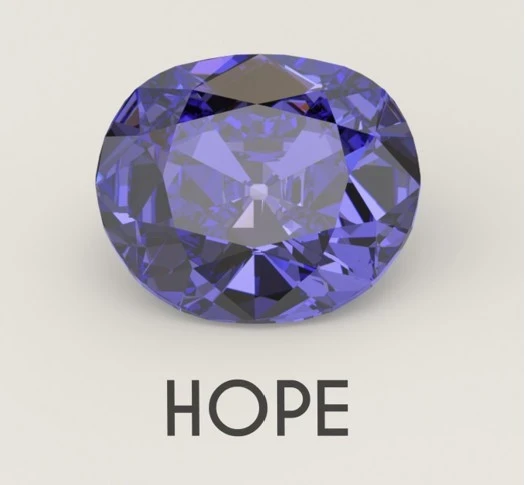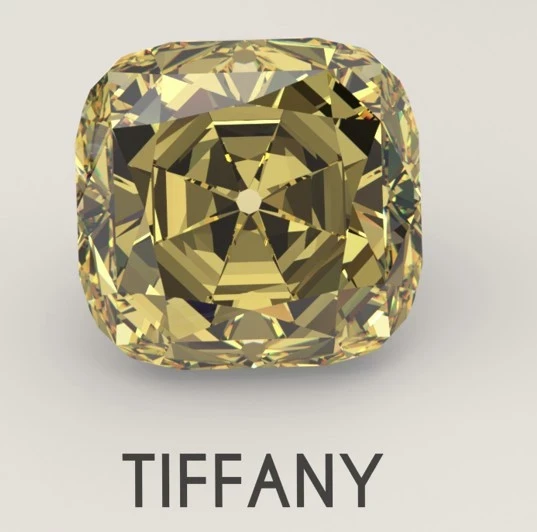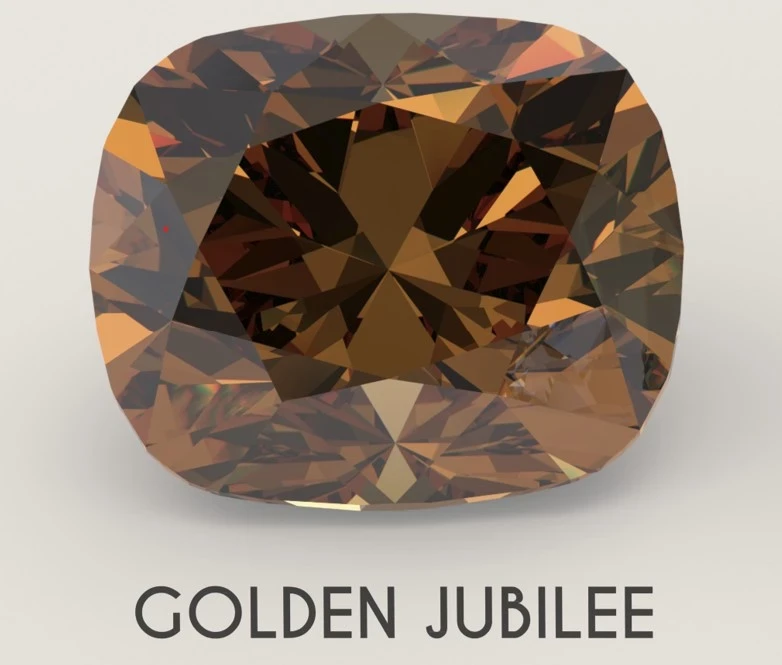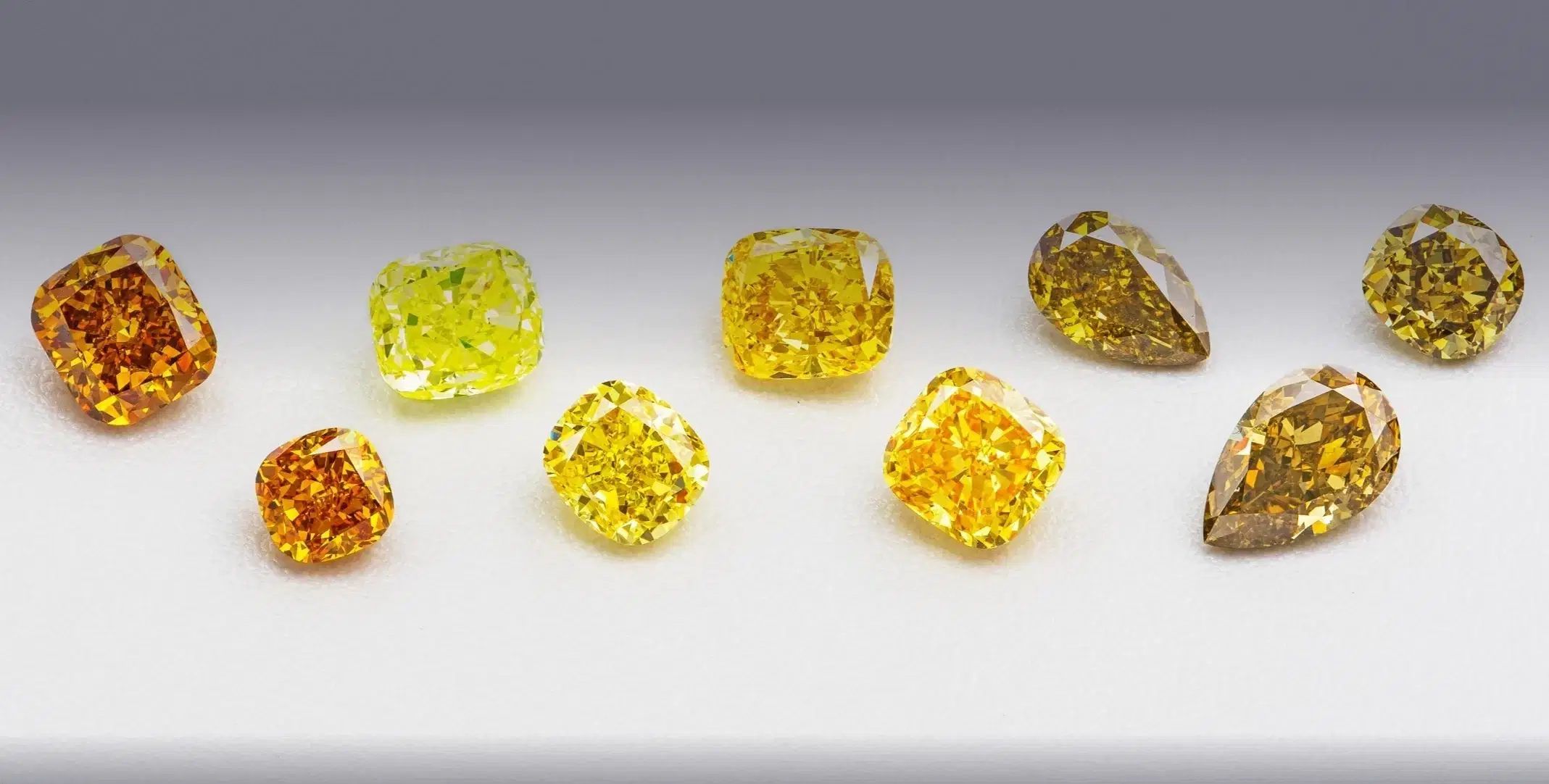Fancy color diamonds are a
captivating subset of the diamond family, dazzling with various
vibrant and captivating colors. In contrast to their colorless counterparts,
these jewels display a spectrum ranging from soft pastels to intense, vibrant
hues. In addition to their immaculate hues, fancy color diamonds are enticing
due to their scarcity and singular appeal.
Below are the numerous types of
fancy color diamonds and their distinguishing qualities.
Yellow Diamonds
Yellow diamonds, also known as
"canary diamonds," exude warmth and allure with their bright and
sunny tints. During the diamond's formation, nitrogen impurities create a
yellow hue ranging from light lemony to deep golden. Yellow diamonds
are widely used in ordinary and statement jewelry.

Watch Yellow Diamonds in Super HD.
Pink Diamonds
Pink diamonds symbolize grace and
romance, with delicate and enticing pink hues varying from pale blush to bright
pink. Theories suggest that the deformation of the crystal lattice causes this color because of intense pressure during formation. These diamonds
are uncommon and in high demand due to their exceptional beauty and
limited availability.

High Intensity Colored Pink Diamonds are Exceptionally Pricey. Watch HD Videos Here.
Blue Diamonds
Blue diamonds are among the most
valuable and coveted gemstones in the world. The presence of boron within the
diamond's structure is responsible for its mesmerizing blue colors, extending
from sky blue to deep sapphire shades. Boron absorbs the red, yellow, and green
wavelengths of light, permitting blue tones to predominate. The illustrious
Hope Diamond—entrancing with its intense blue luminosity--is a well-known
example of a blue diamond.
Green Diamonds
Green diamonds display a captivating
aura of freshness and vitality, providing a distinct and vibrant alternative to
conventional diamond hues. Exposure to natural radiation during the process of
gem formation causes the green hue, which is frequently accompanied by
secondary hues of yellow and blue. Such an array of colors enhances their
aesthetic value, making them desirable among collectors and connoisseurs.
Ruby-Colored Diamonds
Red diamonds are the rarest of all
fancy color diamonds and are regarded as the most exclusive gemstones. Their
enticing red tints, which evoke fervor and resilience, result from a unique
molecular structure that scatters light to create the red color. Red diamonds
command astronomical prices at auctions due to their exceptional rarity and
attractiveness.
Orange Diamonds
Orange diamonds emit a warm and
inviting radiance, exhibiting a harmonious combination of red and yellow hues.
It is believed the coloration results from a combination of nitrogen impurities
and structural flaws. The intensity of the orange tint can vary, with some
stones showing a pure orange hue while others exhibiting secondary shades.
Orange diamonds are renowned for their uniqueness and ability to stand out in
any setting.
Purple Diamonds
These diamonds, from delicate
lavender to rich and deep purple, captivate with their regal and enigmatic
allure. The origin of their color is still a topic of scientific inquiry; it is
speculated that hydrogen and lattice distortion likely contribute to the purple
tints. These stones are highly valued for their rarity and aptitude to elicit a
sense of luxury and sophistication.
Brown Diamonds
Brown diamonds, also known as
"champagne" or "cognac" diamonds, reveal a broad range of
earthy and warm hues. Once regarded as less desirable, they have gained
popularity in recent years due to their adaptable appeal. Lattice distortions
caused by plastic deformation during the diamond's formation are responsible
for its color.





